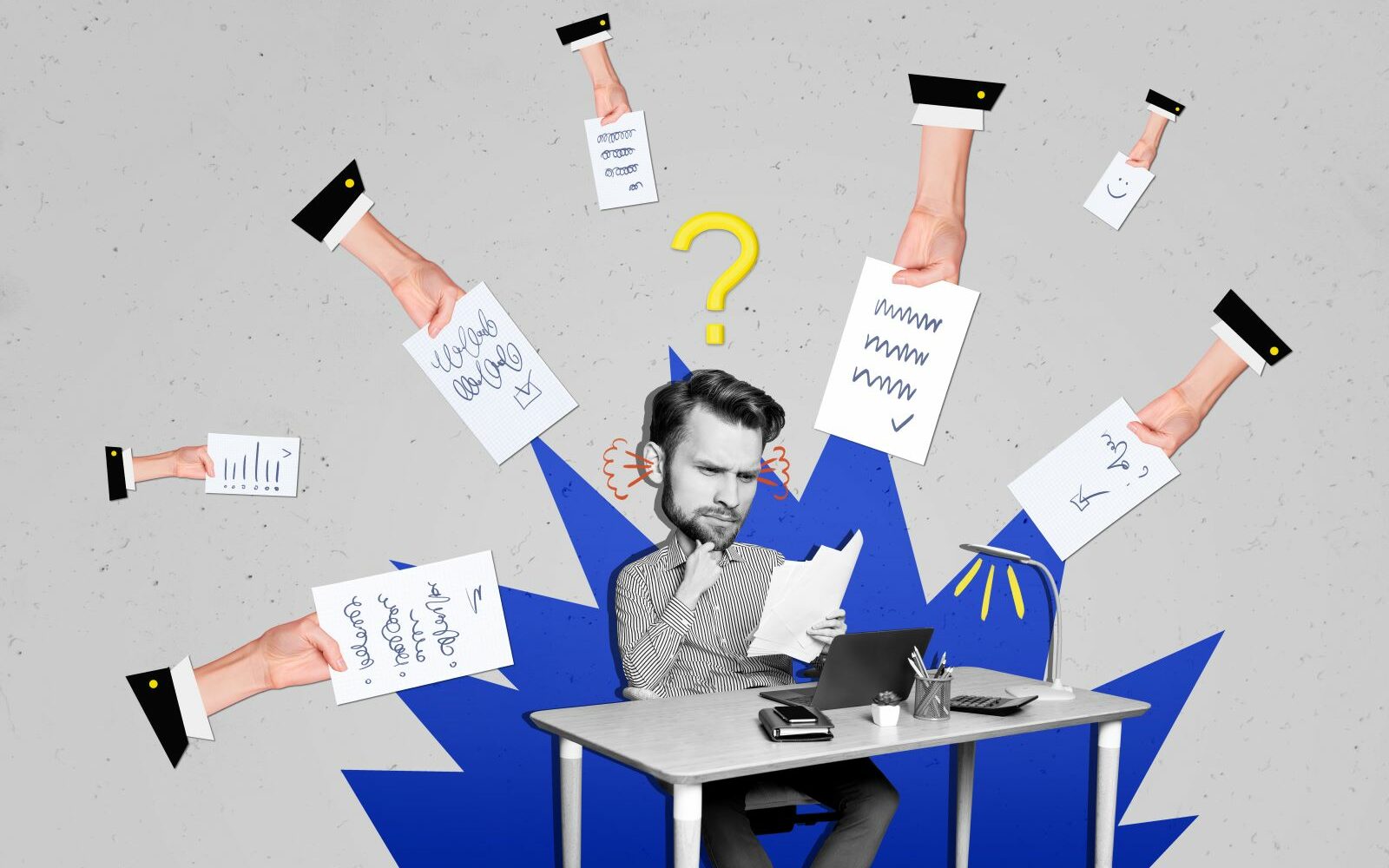Maybe the Rolling Stones had it right when they kept hollering about how we “…can’t get no satisfaction”! Think about your work days over the past couple of years. How satisfied are you with your current work from home setup? Is it living up to the dream where, even prior to COVID, people were clammering to work from home? What’s this growing work from home epidemic of people reporting “virtual meeting fatigue” or “Zoom fatigue”?
Zoom fatigue is tiredness, worry or burnout associated with the overuse of virtual platforms of communication, particularly videotelephony. The name derives from the cloud based videoconferencing and online chat software Zoom, even if it used to refer to non-Zoom video conferencing platforms.
Wikipedia
Explanations for Virtual Meeting Fatigue

There are a few basic explanations that get tossed around as the cause of this new ailment. We’re sharing those first and then will explore a much deeper reason for our “virtual fatigue”.
Fatigue from managing eye contact. The concept is that when you’re meeting with someone in person you can look around the room as well as shift your body to look from one speaker to another. When you’re on a virtual call your eyes stay fixated on one spot on a close screen, causing strain and exhaustion.
In-person meetings present their own challenges. There’s no option to turn off your camera for a moment and blow your nose or to turn off the stove. People rarely get up to pace while in a conference room, but will often do so on a virtual call. You also don’t actually need to be staring at the camera for an entire meeting. Taking notes, for example, breaks up that eye contact. It seems like a trade-off rather than a disadvantage.
Fatigue caused by constant self-correction from viewing oneself on camera. This excessive self-view can definitely be a distraction. The simple solution is to turn off self-view in most video conferencing tools. Simple enough solution for removing a core cause of friction in one’s day.
Let’s assume that most people are aware of virtual meetings having many positive advantages, amongst those are flexibility, comfort in picking your own physical environment, reducing the cost per wear of those heavenly Ugg slippers, and even knowing that by meeting virtually we’re reducing our carbon footprint. Why are we so drained from virtual meetings? Doesn’t it seem a little strange that having a flexible technology, which to previous generations had been as out of reach as C-P30’s ability to master natural language processing, is something we’re griping about? Are we just never satisfied?
Good news! This is not a case of a new generation not appreciating how good we have it. To understand the exhaustion caused by virtual conferencing, we first need to gain a better understanding of how our online meetings work.
Also Read: Stop Skipping Lunch! How Glucose Levels Impact Meeting Productivity
Packet Switching – What it is and how it works
The simplest way to explain how information travels over the internet is by using the same example given by the brilliant Roger Scantlebury, who was part of the team at National Physical Laboratory who pioneered this technology.
Imagine, as in Scantelbury’s example, someone asks you for your bible. You may not want to part with your precious copy so you offer to photocopy yours and send a new copy to them. Copying the bible takes a long time and would be heavy to send in one delivery, so you start sending out pages as you have them done. Slowly you’ve sent out many different envelopes of pages that, when reassembled, should be the complete bible. Those envelopes would be called your packets when we apply them to our virtual meetings. Your video and audio snippets are the contents of the packet.
Taking your original data, breaking it up into small pieces, sending the small pieces out and reassembling that data on the other end is called “packet switching”. When we’re on a virtual call, that’s exactly what the technology is doing. We’re not sending one big bible over in FedEx; we’re sending many envelopes with individually copied pages.

The virtual meeting tools aren’t necessarily receiving everything in the same order that you sent them, and are also receiving packets at different times. They have to open up the packet and reassemble the transmission. Eventually they’ll need to decide when they have as many packets and they’re going to get and that the order is as close to what can be determined as accurate.
What happens when some packets arrive late or don’t arrive at all? The same thing as what would happen when reassembling that bible. Either the assembler can decide to wait until they’re confident that they’ve received everything, or they can assemble whatever is available and accept the imperfection in the quality of output.
Delayed responses and glitches
Pauses in response create distrust. We learn a lot from a study done by Felicia Roberts and Dan Foti of Purdue University. One thing that the researchers found is that adding a pause longer than 700 milliseconds before replying in conversation rates the answer as a less than honest response. This was applied to questions like, “Are you on track with that delivery?” and a response of “Sure”. If the responder takes more than 700 milliseconds to answer, they lose credibility.

If you’ve ever watched a trial where witnesses are joining remotely, this becomes very apparent. When the courthouses aren’t cutting edge on their network setups and there’s a delay between when a question is asked, to when the witness hears it, it can seem like a witness is taking an unnatural amount of time to “come up with” their answer.
The majority of cultures follow the “no gap, no overlap” conversational rule. This rule means that we take turns speaking, instead of interrupting. When there are interruptions, people can’t properly time their turns. If there are delays in speech, people end up talking over each other, which causes a clash that needs to be resolved.
Zoom strives for a lag of just 150 milliseconds with a lot of buffered capacity for new user sign up. Despite being able to handle more users, their lag goal is an ambitious one on any platform. There’s potential for heavy network usage and other such factors that are outside of Zoom’s control, causing the delay to be significantly longer. In the “no gap, no overlap” rule the expectation is about 200 milliseconds. The simple math tells us that if a user takes roughly 200 milliseconds until they give their answer, and each time there’s 150+ milliseconds added for all the packets to make it over, we have a delay that will be a consistent factor of disruption on every call.
Differences in accents or hard to understand connections are rated as less trustworthy. Foti and Roberts found that a foreign accents, fuzzy connections and even written/typed verbiage in low contrast fonts are at a disadvantage. The human brain finds that the simpler it is for it to understand something, the more believable that information becomes. When one “envelope” is lost in transit, the same concept applies.
As packets are getting transmitted for our virtual calls, there’s an inherent challenge in the packet switching process where a final package could experience packet delay or even packet loss causing delay or broken audio.
Also Read: Theft at a Meeting: How to Respond When Someone Steals Your Thunder
The bottom line
We aren’t taking for granted the massive achievement of a one button click to join a virtual meeting. We’re simply managing the challenge of the audio of these calls running up against our natural habits of speech. Our brains are working overtime to compensate for delays and/or glitches. Now that we understand the inherent issues with packet switching and how that requires additional concentration, leading to fatigue, we can work towards a solution. If we slow down the pace of our speech in these meetings and allow ourselves more time to process the dialogue being shared, our virtual meetings will be less taxing. Making these changes will help us stay energized for a day where we can get satisfaction from all that we’ve accomplished collaborating together in meetings.







